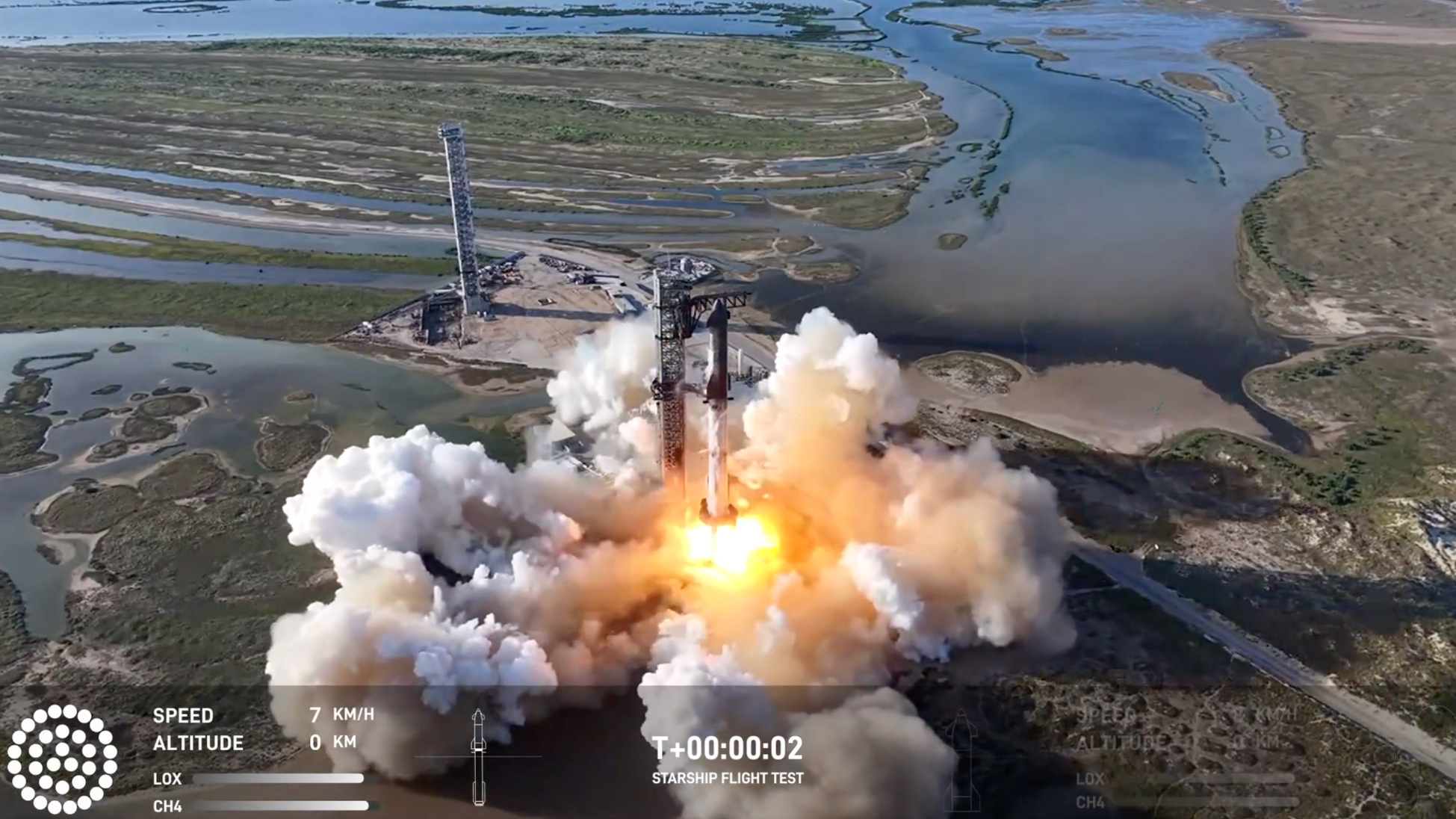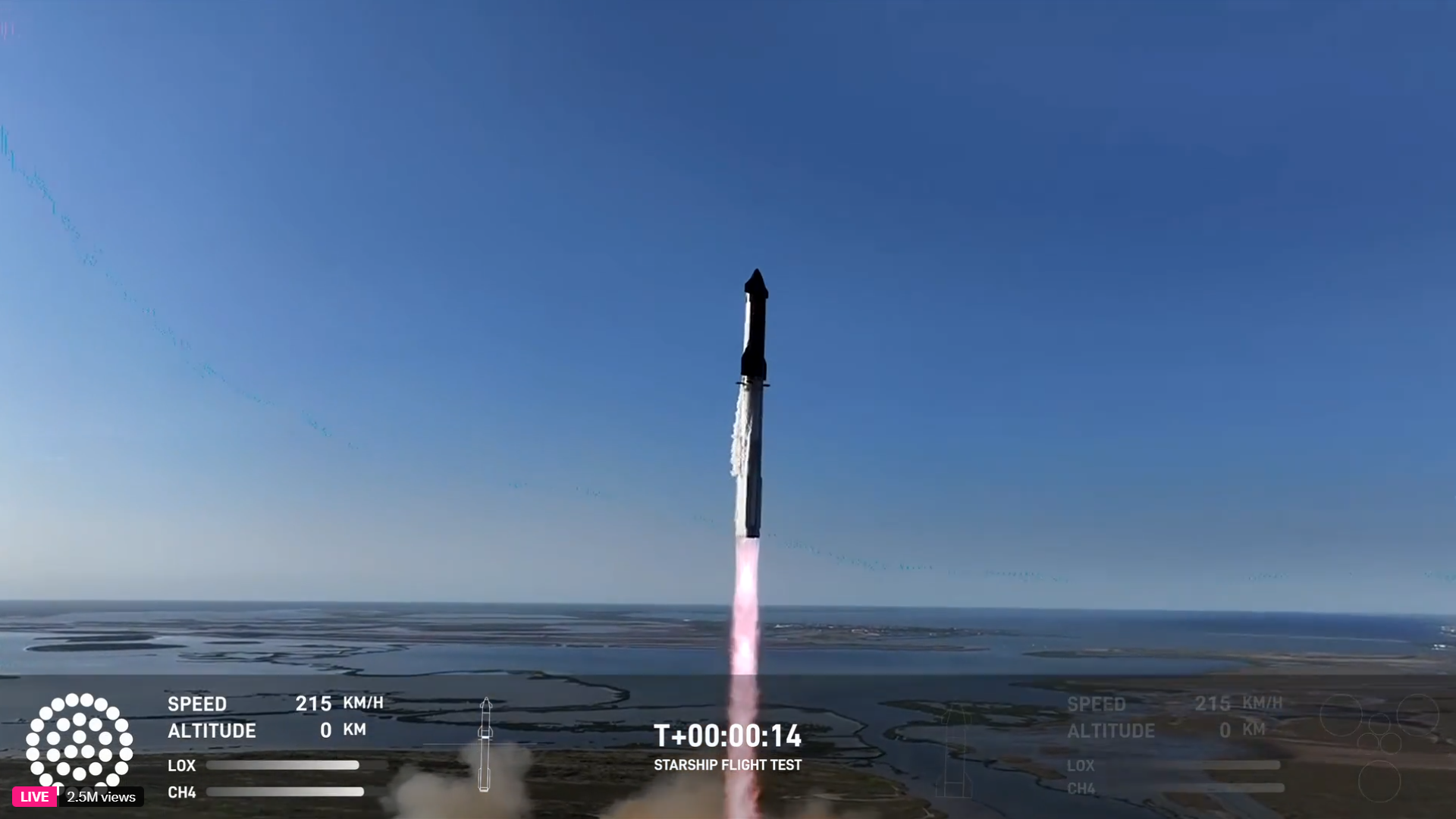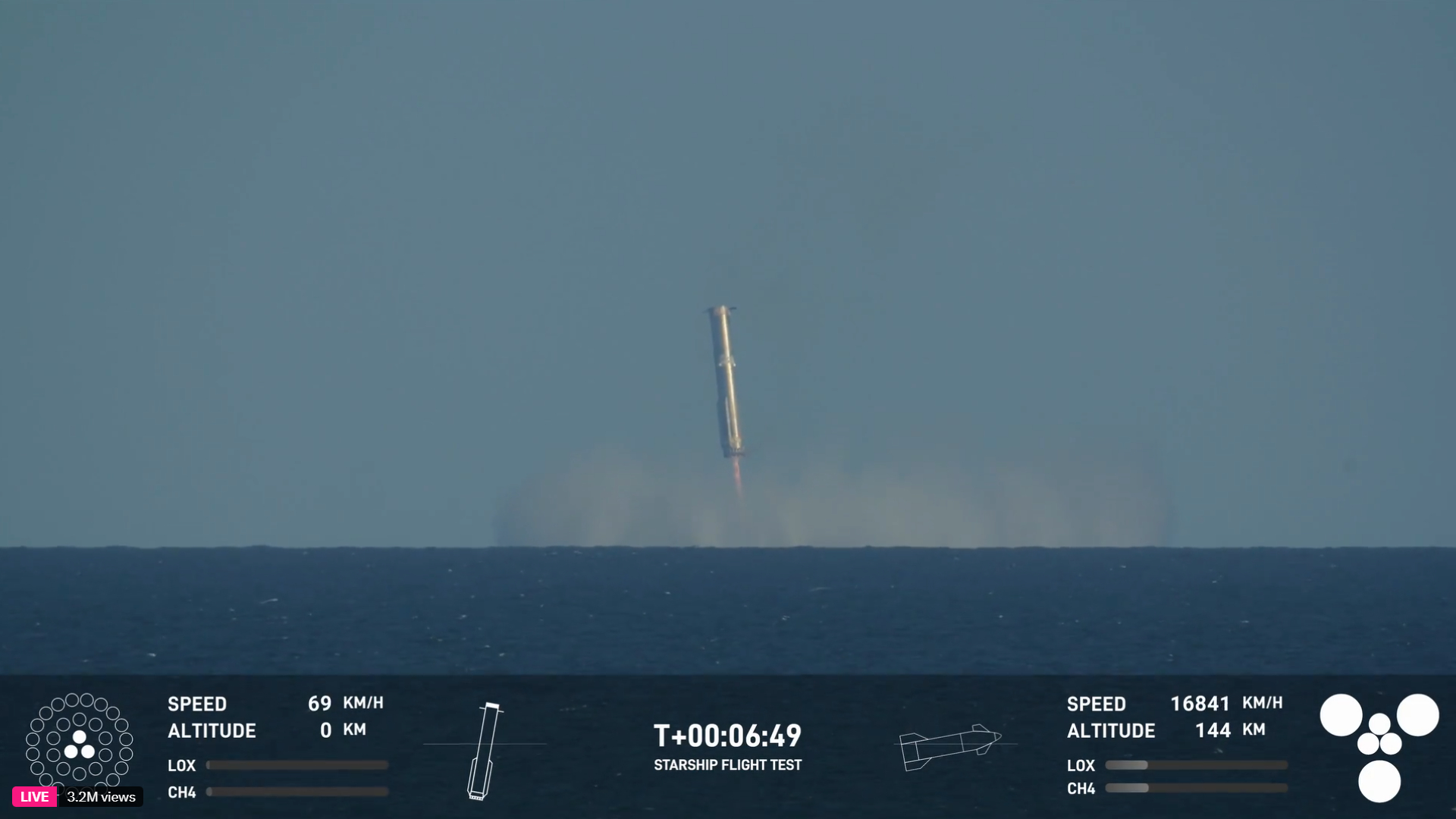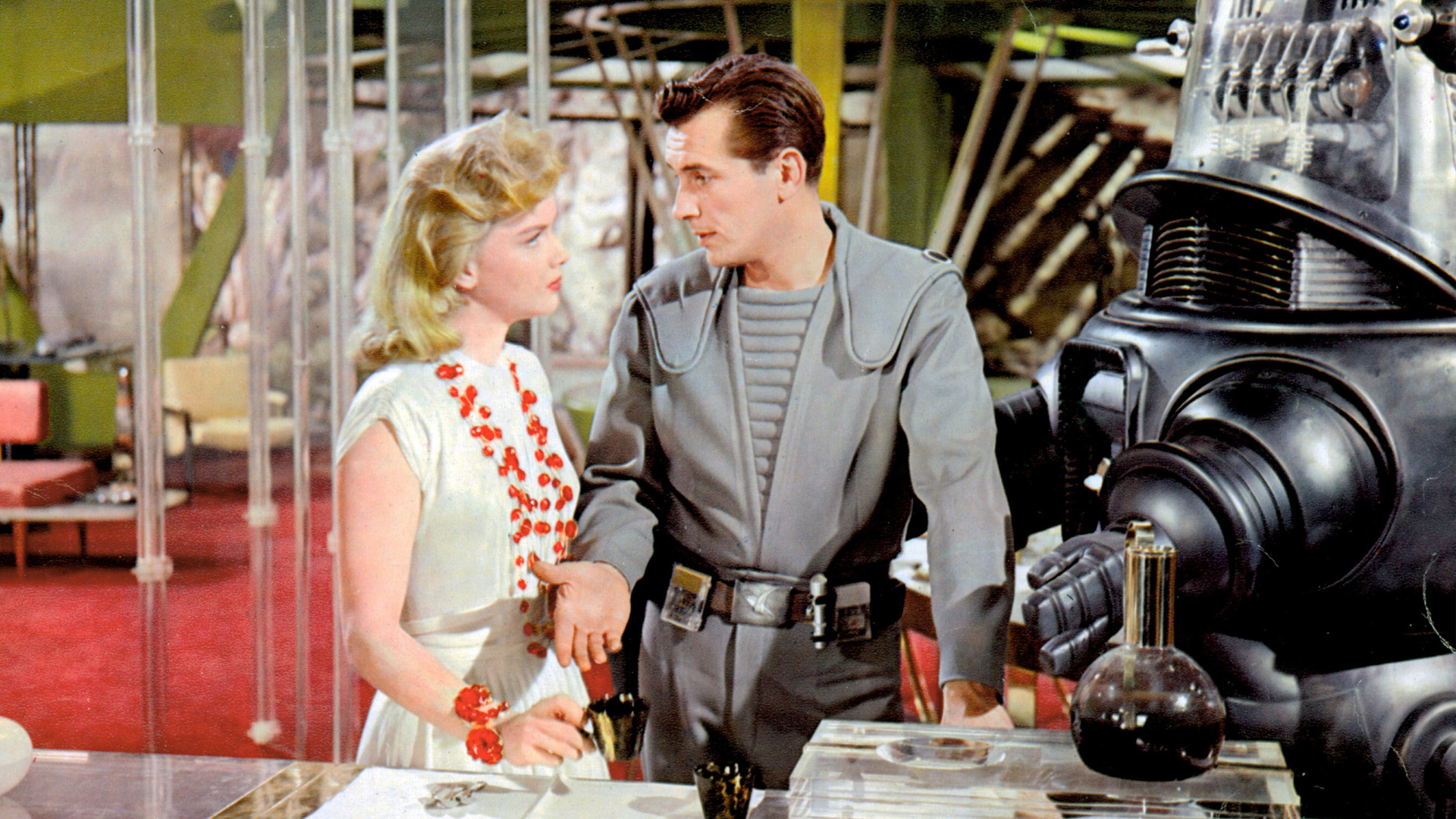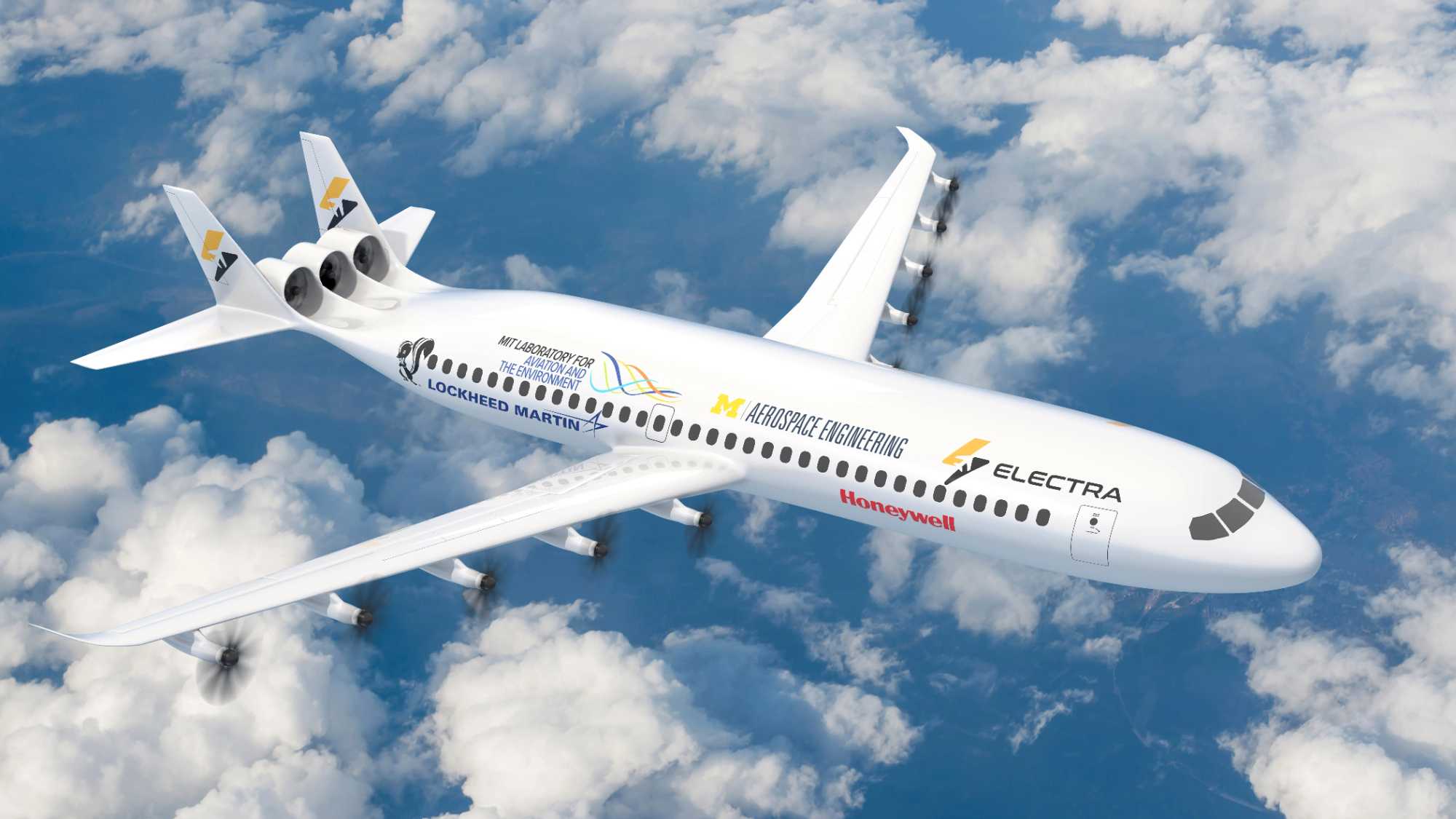The biggest and most powerful rocket ever built now has a half-dozen launches under its belt.
SpaceX‘s 400-foot-tall (122 meters) Starship megarocket lifted off for the sixth time ever today (Nov. 19), rising off the orbital launch mount at the company’s Starbase site in South Texas at 5:00 p.m. EST (2200 GMT; 4:00 p.m. local Texas time).
SpaceX landed Starship’s huge first-stage booster, known as Super Heavy, back at the launch tower on the vehicle’s most recent flight, which occurred on Oct. 13. The company aimed to repeat that feat — which the tower achieved with its “chopstick” arms — today, but the flight data didn’t support an attempt.
“We tripped a commit criteria,” SpaceX’s Dan Huot said during the company’s Flight 6 webcast. So Super Heavy ended up coming down for a controlled splashdown in the Gulf of Mexico instead, hitting the waves seven minutes after liftoff.
Anticipation for Flight 6 was high, in part because of the planned booster-catch attempt. For example, President-elect Donald Trump made the trip to South Texas to watch Flight 6 in person.
Related: Starship and Super Heavy explained
Trump’s support for Musk and Starship isn’t terribly surprising; the two billionaires have apparently grown quite close over the past few months.
Musk campaigned hard for Trump’s election and put more than $100 million of his own money toward that effort. And Trump has appointed Musk to co-lead the “Department of Government Efficiency.” This advisory group, Trump said, will help his administration “dismantle Government Bureaucracy, slash excess regulations, cut wasteful expenditures and restructure Federal Agencies.”
An action-packed flight
Today’s mission aimed to do far more than just bring Super Heavy back to Earth in one piece. SpaceX also wants to put Starship’s upper stage — a 165-foot-tall (50 m) spacecraft called Starship, or simply “Ship” — through its paces.
The launch sent Ship on the same semi-orbital trajectory that it took on Flight 5, targeting a splashdown in the Indian Ocean off the coast of Australia about 65 minutes after liftoff. But there will be some new milestones along the way this time, if all goes according to plan.
For example, Flight 6 carries the first-ever Starship payload — a plush banana onboard Ship, which serves as a zero-gravity indicator. (It will not be deployed into space.) In addition, Ship will re-light one of its six Raptor engines about 38 minutes into the flight. (Super Heavy also employs Raptors — a whopping 33 of them.)
This burn will help show that Ship can perform the maneuvers needed to come back to Earth safely during orbital missions. Indeed, Ship is designed to be fully and rapidly reusable, just like Super Heavy; SpaceX eventually intends to catch it with the chopstick arms as well, and will likely try to do so on a test flight in the near future. (Landing directly on the launch mount, rather than on a ship at sea or a designated touchdown pad, will enable quicker and more efficient inspection, refurbishment and reflight, SpaceX has said.)
Flight 6 is also testing modifications to Ship’s heat shield, which protects the vehicle during reentry to Earth’s atmosphere.
“The flight test will assess new secondary thermal protection materials and will have entire sections of heat shield tiles removed on either side of the ship in locations being studied for catch-enabling hardware on future vehicles,” SpaceX wrote in a mission description. “The ship also will intentionally fly at a higher angle of attack in the final phase of descent, purposefully stressing the limits of flap control to gain data on future landing profiles.”
SpaceX also shifted the launch time for Flight 6, to allow for better observation of Ship’s reentry and splashdown. Flight 5 (and all four of its predecessors) lifted off from Texas in the morning, and Ship came down in darkness on the other side of the world.
Ramping up the flight rate
SpaceX is developing Starship to help humanity settle the moon and Mars, and to perform a wide variety of other spaceflight tasks, such as building out its Starlink broadband megaconstellation in low Earth orbit.
NASA has a serious stake in the vehicle, selecting Starship to be the first crewed lander for its Artemis program of moon exploration. If all goes according to plan, Starship will put NASA astronauts down on the moon for the first time in late 2026, on the Artemis 3 mission.
SpaceX is working to get Starship up and running as soon as possible, and test flights are a big part of this effort. The megarocket has now flown six times — in April and November of 2023, and March, June, October and November of this year — and the cadence is likely to increase greatly in the near future.
Musk is apparently targeting 25 Starship launches in 2025 and 100 a few years after that. Those numbers may seem optimistic, but SpaceX has already launched 113 missions of its workhorse Falcon 9 rocket so far in 2024. And the regulatory environment — which Musk has railed against repeatedly in recent months — could soon relax considerably, given Trump’s stated goals and his apparently closeness with the SpaceX founder and CEO.
These test missions are designed to pave the way for more ambitious jaunts — and soon, if all goes according to plan.
“Every one of these flights is a step closer to a fully operational Starship that will take us beyond Earth orbit, and with our pace of rapid iteration here, the moon and Mars are not nearly as far in the future as you may think,” Kate Tice, a senior quality engineering manager at SpaceX, said during today’s launch webcast. “In fact, we’re planning to send starships to Mars as soon as 2026, which is when the next Mars transfer window opens.”

